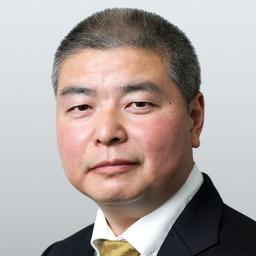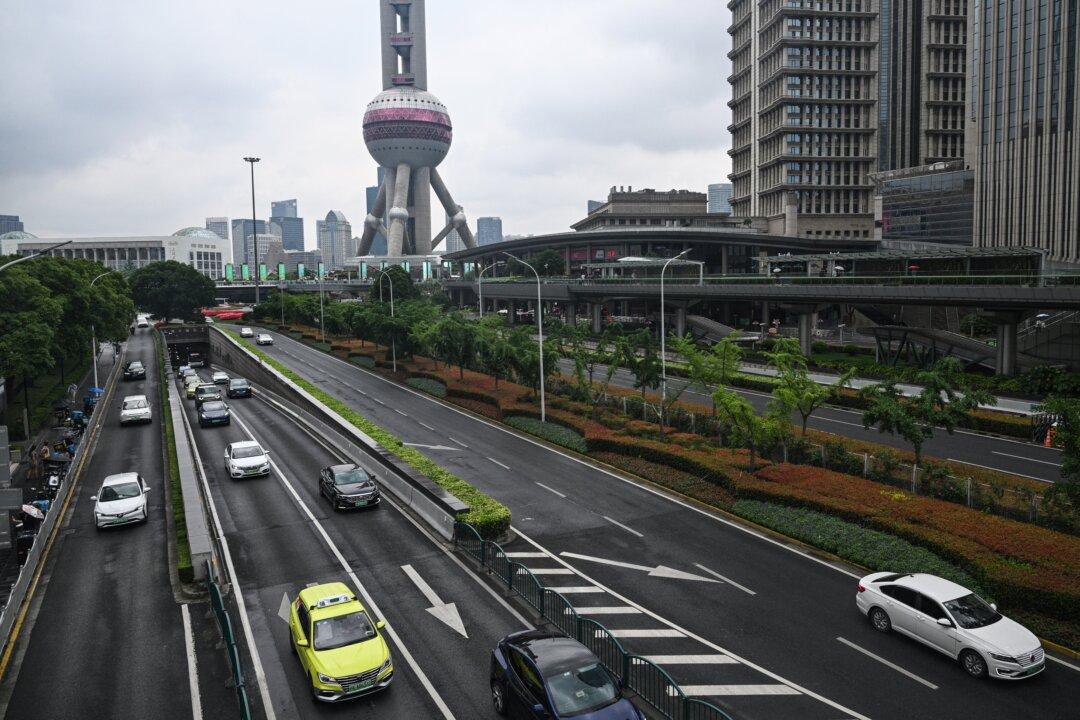Later this month, the Chinese Communist Party will hold its Fifth Plenary Session of the Central Committee of the Chinese Communist Party. Traditionally, during this session, the CCP will outline the objectives for its planned economy, in its Five-Year Plans. This year will mark its 14th Five-Year Plan.
A Planned Socialist Economy
Generally speaking, the Five-Year Plan is destined to fail.Communism, by nature, restricts and hinders economic development as a whole, and so does the Five-Year Plan, a means of social and economic control that fosters passivity more than creativity.
The CCP adopted the Five-Year Plan approach from the former Soviet Union. This planned economy is fundamentally a socialist market economy, and more so, a “bird-cage economy,” a theory introduced in 1980 by Chen Yun, a veteran communist of the Mao Zedong era. Chen believed that the market in China should operate like a bird in a cage.
Surely, the CCP will never remove the cage. If the cage were gone, the bird would fly freely—and, certainly, leave no room for the existence of the CCP.
Let me be more specific. Political responsibility is foremost in democratic countries. Leaders are held accountable for their governance. When people are dissatisfied with the way the country is run, the leader will have to step down. But the communist system will never allow anyone to hold the CCP accountable for anything. So-called accountability only exists as an excuse for factional infighting within the regime.
In addition, the Five-Year Plan is just words on paper; it was never equivalent to the actual operation of the Chinese economy.
Still, formulating the plan is a big project that consumes huge resources and manpower. According to Chinese news portal Huanqiu.com, the preparation of the 13th Five-Year Plan started in the middle of the implementation of the 12th plan. It took three years and involved four stages and 10 steps to develop. As for the amount of time and personnel involved, the plan was, after all, in line with political correctness and its planning and implementation are “unparalleled.”

The 14th Plan Is Bound to Fail
My second point is that Xi Jinping’s administration is self-deluded. The 14th Five-Year Plan (2021–2025) has become a protracted war that cannot be won because it’s doubtful that the CCP will even make it to 2025.The regime’s mouthpiece Xinhua News Agency reported on two guidelines set forth at the Politburo meeting on July 30 for the 14th Five-Year Plan and the future targets for 2035.
The first guideline emphasizes three prevailing conditions. “The nation’s development remains in a period of strategic opportunity,” “peace and development remain as the theme of the time,” and “the nation has entered a stage of high-quality development with many advantages and conditions, but the problem of unbalanced and insufficient development remains prominent.”
The second guideline, from the perspective of protracted warfare, is to “accelerate economic development based on the domestic cycle, and coordinate with the external cycle.”
On Sept. 1, Xi further stressed a “systematic deep-level reform concerning the overall situation of the country,” Xinhua reported.
The first guideline is both ignorant and deceptive. First, a new U.S.–China Cold War has just started, and anti-communism has become a trend around the world. How could there be a “strategic opportunity” for the CCP?
Second, the inherently offensive, expansive, and subversive nature of communism would never permit “peace and development.” This so-called “theme of the time” can quickly change from peace and development to war and revolution if given the opportunity. Obviously, the Trump administration has awakened.
Third, since 2009—even though the CCP official data said 2011—China’s economic growth rate has continued to decline and has not bottomed out. What is the “high-quality development stage?”
The guideline on protracted war is bound to fail.
But will this remedy work? The new cold war seems to spell out the answer to this question.
A U.S. ban on China’s chips has endangered the lifeline of Chinese companies ZTE and Huawei. If the United States initiates financial sanctions, they will destroy the CCP like a nuclear bomb. So the so-called international cycle can only get stuck. What about domestic circulation?

The Domestic Cycle Is a Fantasy
Since the CCP stole the authority to govern China over 70 years ago, it has never been able to build a stable economic framework in the country. Generally speaking, the 70 years of a planned economy in China has brought a huge disaster to the world, including moral degradation and environmental destruction.The first was in April 2001, when the State Council issued a directive outlawing regional barriers.
As of March 2018, the regime reported 59 cases of suspected monopolistic conduct by local governments. In 2019, the CCP issued a notice by four departments, including the State Administration for Market Regulation, that were conducting a review of the policies and measures impeding the unified market and fair competition.
Decoupling of the Global Industrial Chain
One obstacle is the inevitable decoupling of the global industrial chain from China. From the perspective of global economics, manufacturing migration is a normal phenomenon, and this is beyond the CCP’s control. Also, decoupling from the CCP has become the inevitable choice of the global industrial chain. The re-industrialization of the U.S. and EU markets will smoothly resolve any pressure created in the process of decoupling from the CCP.In the current economy, “domestic circulation” and “international circulation” are inseparable; this is especially true for China.
Dependence on External Technology
From 2001 to 2002, Chinese Science and Technology Daily published 21 articles on the core technologies that impede or inhibit China’s industrial development. Eighteen years later, it once again launched another 35 reports on core and key sectors that still rely on overseas sources, including 35 bottleneck techniques and more than 60 core technologies. This shows that China’s dependence on foreign science and technology has not fundamentally changed.The Private Enterprises Dilemma
After the Cultural Revolution, out of practical considerations, the CCP allowed private enterprises to operate. But it never let go of its control of them.However, over the years, no substantive solutions were provided to ensure the survival of private enterprises, and policies have become more and more left-leaning. But without supporting the vitality and space required for private enterprises to flourish, the “domestic cycle” is merely empty talk.
Domestic Consumption Lags Seriously Behind
The Chinese economy is a deformed economy. In the Mao Zedong era, it looked like egalitarianism, but the distinction between officials and ordinary people, and the difference between urban and rural areas divided the Chinese people into three basic categories.The first category, the ruling class or “new class,” held onto power and monopolized every resource with the aid of the Party-state system.
The second category, urban residents, had a high employment rate, with a basic salary and low-level social benefits, such as medical insurance.
The third category, farmers, were trapped in the people’s communes and work-production teams.
In this situation, domestic consumption had little meaning.

After the reform and opening up, the power of the “ruling class” was cashed in, and it became a group with vested interests. China’s economy thus evolved into the worst model (communist capitalism) and the economic disparity between the rich and poor became extreme.
At a press conference this May, Chinese Premier Li Keqiang said, “There are 600 million people in China who earn barely 1,000 yuan (RMB) per month.”
To verify Li’s claim, the China Institute for Income Distribution at Beijing Normal University did a survey of 70,000 Chinese. It concluded that an estimated 547 million, or 39.1 percent, of the Chinese population has a monthly income of less than 1,000 yuan ($147).
The report also showed that 52.5 million people have a monthly income of 1,000 to 1,090 yuan ($160). Therefore, the total population of less than 1,090 yuan is 600 million, accounting for 42.85 percent of the national population. In addition, if the low- and middle-income people are defined by the standard of 1,090 to 2,000 yuan ($295), the total population size of this group will reach 364 million. In other words, there are 964 million Chinese with a monthly income of 2,000 yuan and below.
Similarly, Li Qiang, a professor at Tsinghua University, introduced the situation in his study, “Inverted T-shaped Social Structure and the Structure Tension.”

Li analyzed the data of China’s Fifth National Population Census conducted in 2000 and concluded that the structure of the Chinese society is more like an upside down T-shape, with 64.7 percent of the population at the lowest level and at least 84.1 percent of the employed belonging to the lower class of the Chinese society. The remaining groups are distributed in a pole-shaped structure with no transition in between. Therefore, the majority of the Chinese population is considered poor or in a low class, and the middle and upper classes account for only a very small portion of the population.
Ten years later, Li studied the sample data of the sixth national census and concluded that the overall social structure has not changed, and the middle class still constitutes only a small portion of the whole society.
A report issued by Goldman Sachs in September 2015 stated that China’s consumer market is dominated by a relatively narrow middle class. Less than 2 percent of workers earn enough even to pay income tax, and only 11 percent of the population has reached the middle class (approximately 153 million people). The top “high-end consumers” are only 1.4 million people, with a per capita annual income of $500,000. These people constitute the main body of the Chinese people who shop in Paris, New York, Tokyo, and London.
But how can a social and domestic consumption structure such as this support the proposed “domestic cycle?”
One of the pillars the CCP uses to prop up its claim of legitimacy of rule are economic achievements, especially the “economic miracle” after the reform and opening up.
Over the years, China’s economy has grown tremendously, but at an even greater price: the vast majority of Chinese people just share in the cost but not in the rewards. China’s wealth gap is already one of the worst in the world. The 14th Five-Year Plan and the 2035 goal are nothing but pieces of paper. China’s economy will soon collapse if the CCP is not dissolved.





